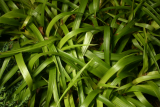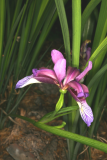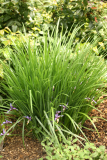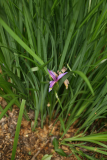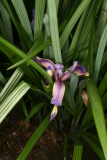Additional notes (click to expand)
Nomenclature
Other use
Iris graminea L. Iridaceae Grass-leaved flag. Flower de Luce. Distribution: Central and Southern Europe. This is probably the Iris bulbosa minor sive angustifolia [the lesser bulbed or narrow-leaved Iris], Lesser bulbed Flowerdeluce of Parkinson (1640). He advised that the properties of all Flag Irises were more or less the same, but says there is no agreement about the properties of the bulbous kinds (such as this plant). Of the Flag Irises, Culpeper (1650) writes that the roots 'resist poison, help shortness of the breath, prove the terms [menstruation]; the roots being green and bruised [crushed up] take away blackness and blewness of a stroke [i.e. a blow] being applied thereto'.
Oakeley, Dr. Henry F. (2013). Wellcome Library notes.
link
Toxicity
Toxic internal effects. Can cause skin sensitization.
Professor Anthony Dayan, 2022
Geographical distribution
- Europe, Eastern Europe, Ukraine
- Europe, Middle Europe, Austria
- Europe, Middle Europe, Germany
- Europe, Middle Europe, Hungary
- Europe, Middle Europe, Poland
- Europe, Middle Europe, Switzerland
- Europe, Southeastern Europe, Albania
- Europe, Southeastern Europe, Bulgaria
- Europe, Southeastern Europe, Czech Republic
- Europe, Southeastern Europe, Italy
- Europe, Southeastern Europe, Romania
- Europe, Southeastern Europe, Yugoslavia
- Europe, Southwestern Europe, France
- Europe, Southwestern Europe, Spain
Iris graminea L.
Family: IRIDACEAEGenus: Iris
Species: graminea L.
Common names: Grass-leaved Iris
Distribution summary: Europe
Habit: Perennial
Hardiness: H5 - Hardy; cold winter
Garden status: Currently grown
Garden location: Plants of the World (C), Plants of the World (C)
Reason for growing: Toxic
